Garments Washing energy efficient dryer is a new generation design for highly efficient use of heat and saving energy, widely used in laundry, and and dyeing factories.
In the fast-paced world of garment production, efficiency is paramount. The traditional methods of drying garments often come at a significant economic and environmental cost. This article explores the transformative impact of energy-efficient dryers on garment factories, emphasizing their benefits, key features, and the path to sustainability.
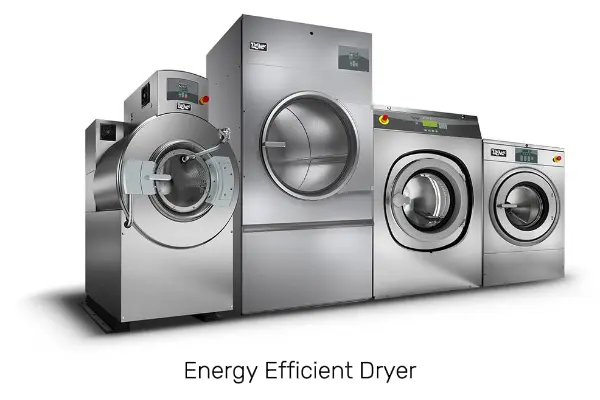
Main Feature of Energy Efficient Dryer
- Energy Efficient Dryer has a digital control panel.
- Use 30% steam less than the regular dryer.
- Energy Efficient Dryer is 10 minutes faster than standard dryer.
- Hot air directly blows into the inner drum, using all energy in heating.
- In the heat exchanger, cold air will be preheated by the condensate water pipe first and then will be heated by steam pipes, to make full use of the steam and condensate water.
- Cold air came from the machine’s right side, easy to clean.
- The ball valve can automatically discharge cold water.
- Equipped with a specially designed cold air door, the cooling step will not remove the heat from the steam pipe, cooling faster and saving more energy.
Machine Parameter of GZPP SERIES Energy Efficient Dryer
| Models | GZPP – 200 | GZPP – 300 | GZPP – 400 | |
| Capacity | lbs | 1200 | 300 | 400 |
| Drum diameter | mm | 1380 | 1800 | 1800 |
| Drum depth | mm | 1100 | 1100 | 1200 |
| Drum volume | lt. | 1640 | 2800 | 3050 |
| Spin speed | rpm | 30 | 28 | 28 |
| Steam connection | θ | DN25 | DN25 | DN25 |
| Steam max pressure | Bar | 6 | 6 | 6 |
| Air max pressure | Bar | 5.5 | 5.5 | 5.5 |
| Power of motor | KW | 2.2 | 3 | 4 |
| Blower motor | KW | 3.7 | 4.4 | 4.4 |
| Total power | KW | 5.9 | 7.4 | 8.4 |
| Voltage | Volt/Hz | 380/50 | 380/50 | 380/50 |
| Machine length | mm | 2100 | 2100 | 2200 |
| Machine width | mm | 1740 | 2040 | 2070 |
| Machine height | mm | 2600 | 2850 | 2850 |
| Machine weight | kg | 1350 | 1450 | 1550 |
| Energy saving | % | 30 | 35 | 35 |
Optional Automatic Function
- PLC + touch screen automatic control panel.
- Inverter/ IR temperature / Humidity sensor.
Optional Heating system
- Gas heating / Electrical heating
Traditional Dryers vs. Energy-Efficient Dryers
Traditional Drying Methods Overview
Traditionally, garment factories have relied on conventional dryers that consume substantial amounts of energy. These machines, though effective, often contribute to high electricity bills and increased carbon emissions.
Concept of energy-efficient dryers
Enter the era of energy-efficient dryers – a game-changer for the garment industry. These advanced machines are designed to optimize the drying process, ensuring maximum efficiency with minimal energy consumption.
Comparative analysis of energy consumption
A closer look at the numbers reveals a significant difference between traditional and energy-efficient dryers. The latter, equipped with cutting-edge technologies, showcase a remarkable reduction in energy consumption, making them an economically and environmentally sound choice for garment factories.
Key Features of Energy Efficient Dryers
A. Advanced insulation technology
Energy-efficient dryers employ state-of-the-art insulation materials, minimizing heat loss during the drying cycle.
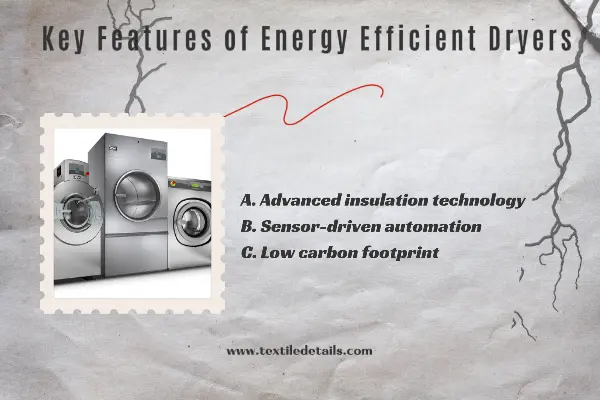
This not only accelerates the drying process but also contributes to energy conservation.
B. Sensor-driven automation
The integration of sensors enables these dryers to adapt to varying loads and fabric types automatically. This level of automation enhances efficiency and prevents over-drying, preserving the quality of garments.
C. Low carbon footprint
One of the standout features of energy-efficient dryers is their commitment to sustainability. With a significantly reduced carbon footprint, these machines align with global efforts to create a greener, more eco-friendly manufacturing environment.
Benefits for Garment Factory
A. Cost savings in energy bills
For garment factory owners, the bottom line is crucial.
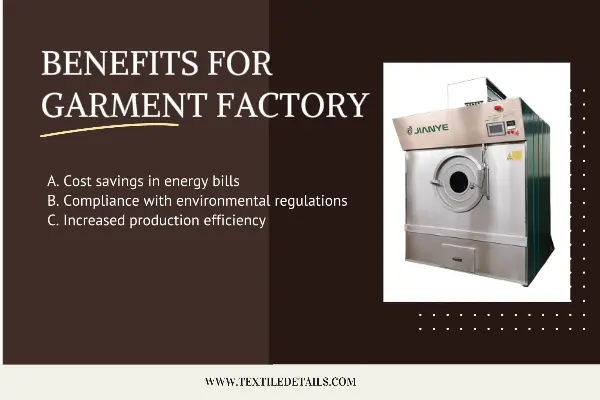
Energy-efficient dryers translate to substantial cost savings in electricity bills, offering a rapid return on investment and improved profitability.
B. Compliance with environmental regulations
As environmental awareness grows, governments worldwide are imposing stricter regulations on industrial emissions. Energy-efficient dryers not only meet but often exceed these standards, ensuring compliance and fostering a positive public image.
C. Increased production efficiency
Beyond cost savings, these dryers contribute to overall production efficiency. Reduced drying times mean faster turnaround, allowing garment factories to meet tight deadlines without compromising on quality.
Impact on Garment Quality
i. Preservation of fabric integrity
Traditional dryers, with their high heat output, can sometimes compromise the integrity of delicate fabrics.
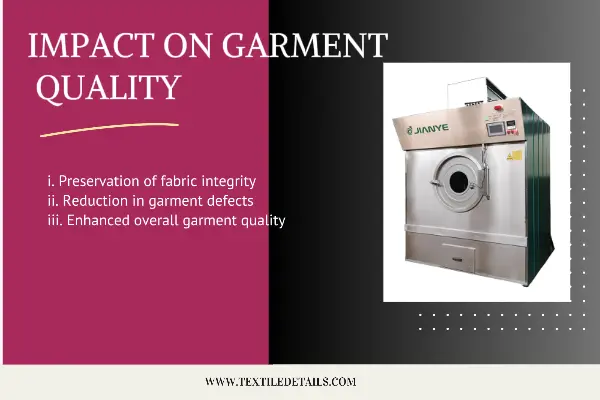
Energy-efficient dryers, with precise temperature control, ensure that fabrics are dried gently, preserving their quality.
ii. Reduction in garment defects
Over-drying and overheating can lead to defects in garments, affecting their market value. Energy-efficient dryers, with their intelligent sensors, eliminate the risk of defects, resulting in a higher-quality end product.
iii. Enhanced overall garment quality
In the competitive fashion industry, product quality is non-negotiable. Garment factories embracing energy-efficient dryers gain a competitive edge by consistently delivering high-quality products to the market.
Sustainability in the Garment Industry
A. Importance of sustainability in the current market
Sustainability is no longer a buzzword; it’s a business imperative. Consumers are increasingly conscious of the environmental impact of their purchases, and garment factories are taking note.
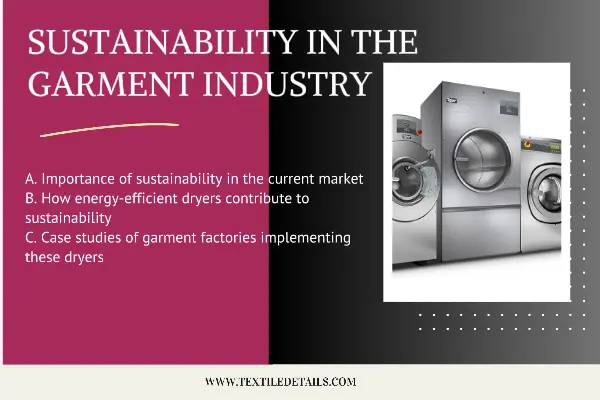
B. How energy-efficient dryers contribute to sustainability
The adoption of energy-efficient dryers is a tangible step toward sustainability. By reducing energy consumption and carbon emissions, garment factories demonstrate a commitment to environmentally friendly practices.
C. Case studies of garment factories implementing these dryers
Real-world examples provide compelling evidence of the positive impact of energy efficient dryers on sustainability. Case studies showcase how garment factories, both large and small, have successfully integrated these technologies into their operations.
Challenges and Solutions
A. Initial investment concerns
While the benefits are evident, some garment factory owners may hesitate due to the initial investment required.
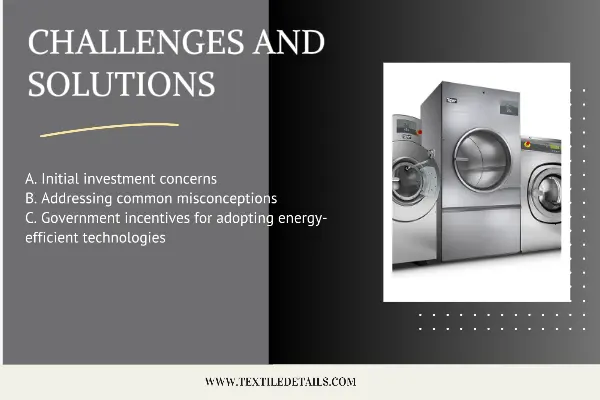
However, this challenge is outweighed by the long-term gains in cost savings and improved efficiency.
B. Addressing common misconceptions
Misconceptions about the complexity of energy efficient dryers can hinder adoption. This section debunks common myths and clarifies the straightforward integration of these machines into existing operations.
C. Government incentives for adopting energy-efficient technologies
Governments worldwide are incentivizing businesses to adopt sustainable practices. This includes financial incentives and tax breaks for garment factories that invest in energy-efficient technologies, making the transition more appealing.
Future Trends in Garment Drying Technology
- Emerging technologies in the textile industry
- Integration of artificial intelligence
- Predictions for the future of energy-efficient dryers
How to Choose the Right Energy-Efficient Dryer?
1. Factors to consider in the selection process.
2. Evaluating specific needs of a garment factory.
3. Compare available different models and brands.
FAQs
What is average payback period for an energy-efficient dryer?
The payback period for an energy-efficient dryer varies but is generally relatively short, often ranging from 6 months to 2 years, depending on factors like energy costs and usage.
Can existing dryers be retrofitted for energy efficiency?
While retrofitting is possible in some cases, it’s often more cost-effective to invest in new, energy efficient dryers for long-term benefits.
Are there government grants available for adopting energy-efficient technologies?
Yes, many governments offer grants and incentives for businesses adopting energy-efficient technologies, providing financial support for sustainable practices.
How much energy can be saved by using these dryers?
Energy savings depend on various factors, but energy-efficient dryers can generally reduce energy consumption by 20% to 50% compared to traditional dryers.
What are the potential drawbacks of energy-efficient dryers?
While the benefits outweigh the drawbacks, potential challenges may include higher upfront costs and the need for specialized maintenance.
Conclusion
In conclusion, the adoption of energy efficient dryers in garment factories is a strategic move toward sustainability, cost savings, and enhanced product quality.
Reiterate the significance of energy efficient dryers in shaping the future of garment manufacturing, emphasizing their role in creating a more efficient, sustainable, and competitive industry.
